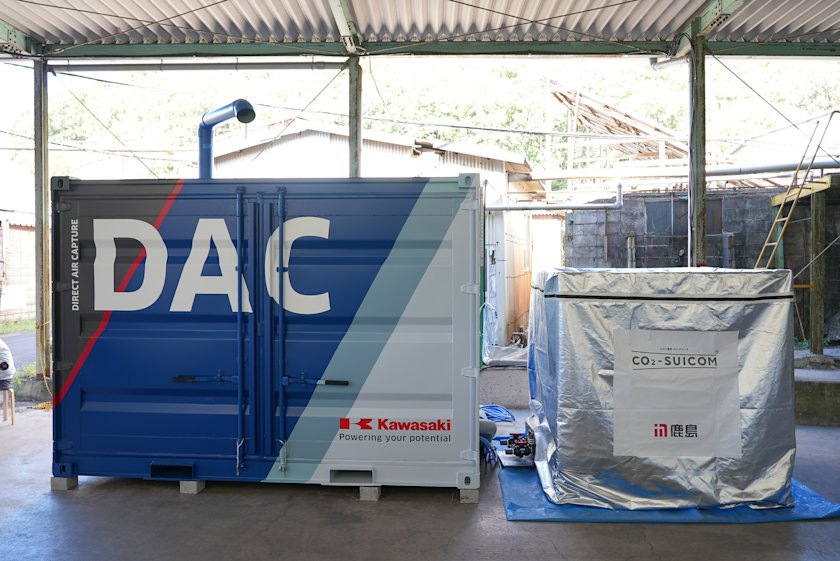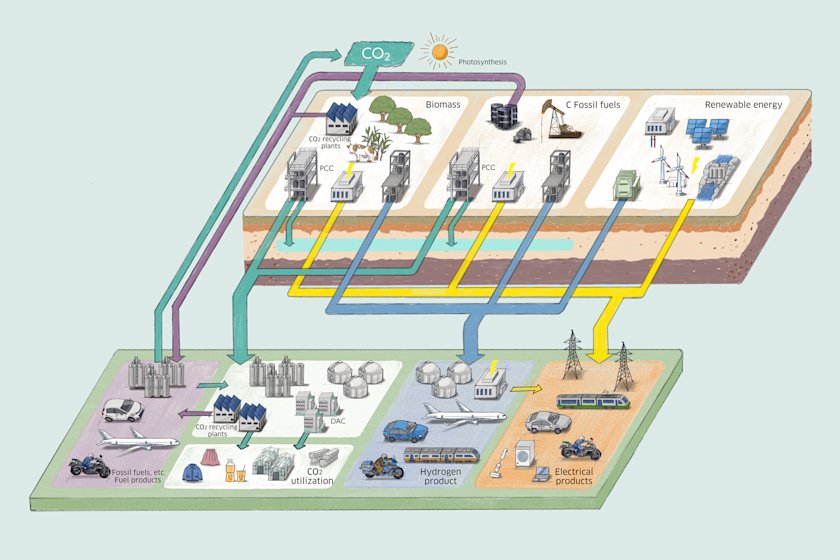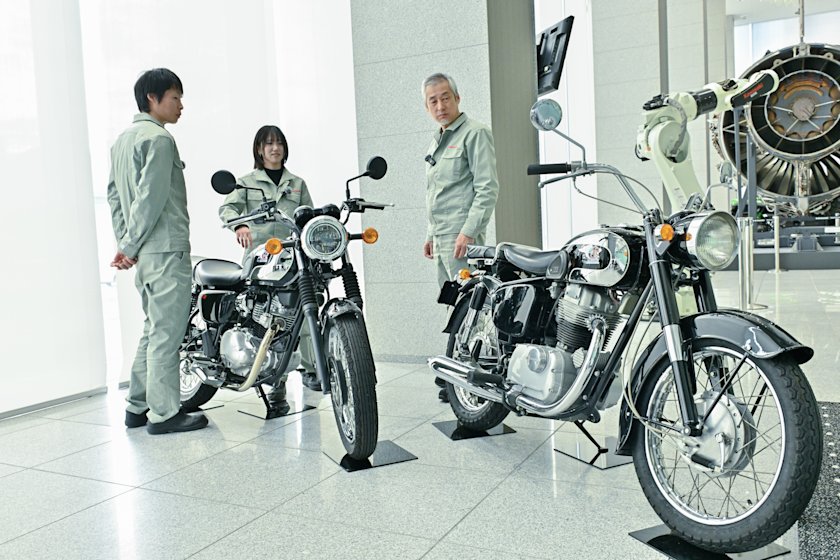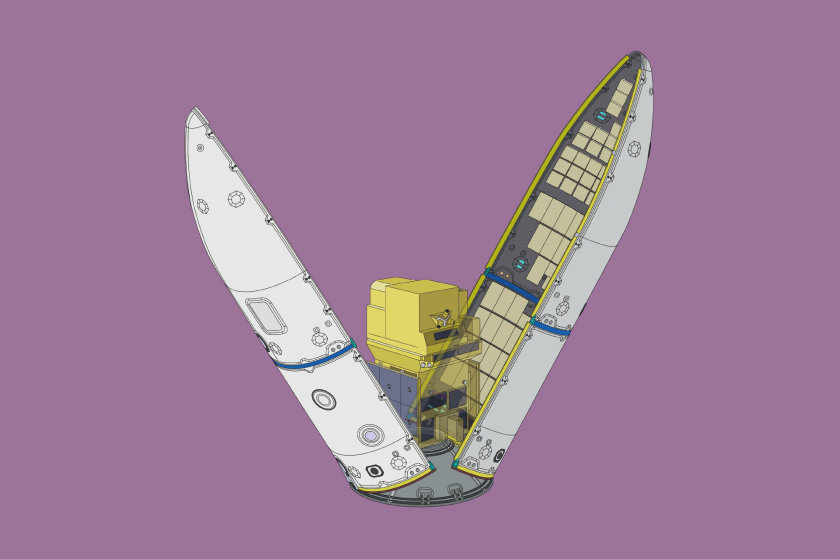For Production, Transportation, Storage, and Utilization of Hydrogen at Lower Costs. Challenges to Commercialization

In order to aim at realizing a decarbonized society, the government of Japan formulated objectives to reduce greenhouse gas emissions to net zero by 2050 and positioned hydrogen energy as the key technology. For the practical use of such energy, it is important to realize the mass production of hydrogen as economical as petroleum and natural gas in the present day.
Kawasaki advances the demonstration testing of the world's first liquefied hydrogen (LH2) carrier and the combustion testing of gas turbines compatible with 100% hydrogen. This article presents the progressive actions of Kawasaki as a world leader in the unique technology of hydrogen energy with an eye on utility for the future.
For the Mass Production of Hydrogen at Low Cost, a Demonstration Project to Produce Hydrogen from Brown Coal and Transport It is in Progress
In 2020, the Ministry of Economy, Trade and Industry of Japan (METI) formulated the Green Growth Strategy to Achieve Carbon Neutrality in 2050 where the hydrogen industry was positioned as the key, and the target hydrogen supply was as high as 3 million tons by 2030 and 20 million tons by 2050. What is required to reach the goal is a method to produce large volumes of hydrogen at the lowest cost as well as engineering hydrogen that emits no CO2 during the production process.*1
The current cost to supply the hydrogen produced in Japan is about 100 yen/Nm3. The METI set the goal of reducing the cost to 30 yen/Nm3 by 2030 on the assumption that a hydrogen supply chain would be established and domestic hydrogen demand would rise to at most 20 yen/Nm3 by 2050, which is the same level as liquefied natural gas (LNG), etc.
Hydrogen is produced either from the fossil fuels of coal and oil or by electrolysis of water into hydrogen and oxygen. Extraction from fossil fuels generates CO2, and a technique has been studied to capture and storage the emissions to underground. Hydrogen obtained through the electrolysis of water powered by renewable energy is cleaner because there are no emissions of CO2 in the production process.
Currently, the Company is making the world’s first attempt at the cheap mass production of hydrogen from an unused resource, brown coal (lignite, which is a geologically young coal with high moisture and impurities) titled the Demonstration Project for Establishment of Mass Hydrogen Marine Transportation Supply Chain Derived from Unused Brown Coal, where a large amount of brown coal from Australia is used to produce hydrogen, which is then shipped to Kobe, Japan.
This project is overseen by the CO2-free Hydrogen Energy Supply-Chain Technology Research Association (HySTRA) comprising seven companies: Kawasaki, J-Power, Iwatani, Shell Japan, Marubeni, Eneos, and Kawasaki Kisen. J-Power is involved in a demonstration project of the New Energy and Industrial Technology Development Organization (NEDO) for the gasification of brown coal and refining of hydrogen in Victoria, Australia. Kawasaki is responsible for the construction of the LH2 carrier (pilot vessel), and Shell Japan will operate the vessel. In addition, Kawasaki and Iwatani build LH2 handling terminals and establish technologies for operating them.
Regarding concrete verification items, handling tests are scheduled using the carrier and the handling terminals and long-distance transportation from Australia to Kobe, followed by voluntary demonstration testing of shuttle operations from Australia and different loading conditions.
*1 See “Green Growth Strategy Through Achieving Carbon Neutrality in 2050 Formulated” of the METI.
First-of-Its-Kind LH2 Carrier Serves the Technical Aspects and the Establishment of International Standards for Safe LH2 Transport
For the practical use of hydrogen energy, engineering is required to transport hydrogen in bulk efficiently and safely. Kawasaki built Japan’s first LNG carrier in 1981 and, since then, has been a leader in cryogenic technology for maritime transportation. Through the integration of shipbuilding and cryogenic skills accumulated over the course of many years, the first LH2 carrier in the world, the Suiso Frontier, was developed. This vessel is intended for the mass transport of hydrogen and offers cooling to -253°C for liquefaction and volume reduction to one eight-hundredth. The vessel is 116 meters long with a gross weight of 8,000 tons and can carry 1,250 cubic meters of LH2 at a volume equivalent to the fuel for 15,000 fuel cell vehicles (FCVs).
The construction of the LH2 carrier is already completed, and demonstration testing of the cargo handling system is about to start at Hytouch Kobe, the first-ever LH2 terminal built by Kawasaki on Kobe Airport Island.
The demonstration testing of HySTRA will start in fiscal year 2021, which consists of the liquefaction of hydrogen produced from the brown coal mined in Australia and transportation to Kobe.

Atsushi Komura, Associate Officer in the Ship & Offshore Structure Business Division, Energy Solution & Marine Engineering Company, comments, “In response to the sinking of the RMS Titanic in 1912, the first International Convention for the Safety of Life at Sea (SOLAS) was concluded to ensure maritime safety. Since LH2 is a novel freight, conventional rules are not applicable. The design and development had to be conducted not according to particular rules but based on risk assessment results.”
Kawasaki contributes to the development of the world’s first LH2 carrier from a technological perspective and plays a part in the establishment of international standards for safe LH2 transport.
Komura adds, “Because the Suiso Frontier, which is a first-ever LH2 carrier, is validated by demonstration testing and repeatedly operated, the experience and knowledge gained will help formulate international rules. Japan will lead in developing these international standards.”
Large Carriers are Developed for Commercialization of Hydrogen. Technology to Use Hydrogen as a Fuel will be Adopted
Larger-scale tankers are essential when the goal of the mass transport of hydrogen energy is cost reduction. Considering profitability, Kawasaki is developing a large vessel with a tank capacity of around 160,000 m3, which is as large as an LNG carrier.
In addition, a cargo containment system (CCS) offering the world's largest capacity (40,000 m3 class per tank) has also been developed for installation on the large LH2 carrier. The vessel is designed to have four CCS tanks, and commercial operations are scheduled to start by the middle of the 2020s.
Presently, Hytouch Kobe accommodates a 2,500 m3 volume spherical LH2 storage tank, which is the largest of its kind in Japan, capable of long-term, stable storage of LH2 at -253°C, as well as other equipment that includes a loading arm system specially designed for transferring LH2 from ship to shore and vice versa.
The tank features a double-shell vacuum-insulation structure comprising inner and outer shells with a vacuum-sealed layer between to prevent heat transfer from the outside. Additionally, the tank has a spherical design, which is the best shape for reducing heat transfer. This tank structure is based on records of achievement and expertise accumulated over more than 30 years of successful operation of similar tanks Kawasaki manufactured in the 1980s to the Tanegashima Space Center.
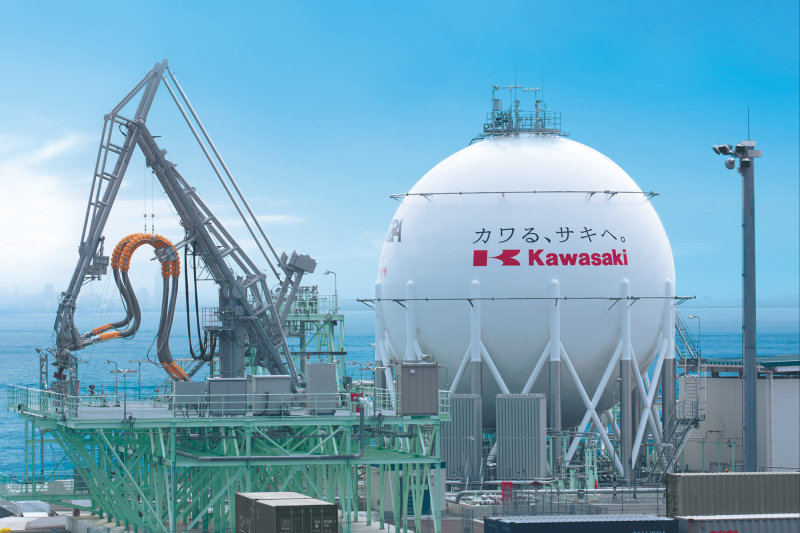
Komura explains, “A large vessel is supposed to be about 300 meters long with steel plates 20 to 50 mm thick. This means, if it is scaled down to a one-meter-long model, this thickness of the steel plates is as thin as aluminum foil. This description will help you imagine how many sophisticated weight-reduction devices are employed for a huge lump of metal with the required strength maintained. Unless it is light in weight, more horsepower is needed from the engine, the volume of freight must be decreased, and economic rationality will be compromised because of these disadvantages. How is a large vessel operated with a lower consumption of fuel and a lower horsepower engine while ensuring safety? It is what made us, or developers, who are puzzled and excited at the same time.”
Moreover, Kawasaki has developed a system whose motive power source is hydrogen instead of heavy oil, which will be adopted by the large LH2 carrier as the first in the world. In the case of LNG carriers, the gas in the cargo tanks, in other words, boil-off gas (BOG), is used as fuel. The same will apply to the large LH2 carrier, and hydrogen BOG will be used as fuel.
Komura passionately describes his emotions with regard to involvement in the world’s first demonstration project of the LH2 carrier, “When Apollo 11 successfully landed on the Moon for the first time in human history, Commander Neil Armstrong said, ‘That's one small step for man, one giant leap for mankind.’ Although the Suiso Frontier is a small ship, the first-of-its-kind LH2 carrier gathers great expectations in terms of carbon neutrality. I believe that the demonstration testing we are to start will be the first step in changing the future global environment and will lead to a major leap forward. This task is very challenging, significant, and very serious for me.”
Gas Turbines Using a Large Volume of Hydrogen as Fuel. Pursuing the Technology of 100% hydrogen-fueled, low NOx Operation
Even when the production and transportation of a large volume of hydrogen energy are realized, it does not make sense if there is no field of use for that quantity. A substantial increase in hydrogen consumption is required in order to achieve the economies of scale to reduce hydrogen costs. One of the uses of hydrogen energy is for fuel cell vehicles (FCVs). The government policy includes popularization of FCVs to the extent of 800,000 units by 2030 and encourages the establishment of hydrogen refueling stations.
However, several millions of FCVs are necessary to consume that volume of hydrogen. On the other hand, for example, if a hydrogen gas turbine is used at a large thermal power plant on the scale of 1 million kW, the volume of hydrogen consumed corresponds to 3 million FCVs, which means a remarkable contribution to CO2 reduction. The use of hydrogen as an alternative to natural gas at a thermal power plant will help realize the hydrogen supply chain.
While combustion in a gas turbine emits a variety of substances, NOx is subject to strict emission limits, and the development of technology to reduce emissions has been addressed with full efforts.
Major combustion methods to suppress NOx generation are water or steam injection and dry low emission (DLE) combustion. In the water or steam injection method, fuel is injected directly into the combustor and burned, while the spraying of water or steam into the combustor to reduce NOx. On the other hand, the DLE combustion method injects premixed air and fuel into the combustor and burns thin fuel, which suppress NOx generation.
The initial development at Kawasaki consisted of the partial modification of a conventional gas turbine combustor that adopted the water or steam injection method and the combustor is developed to be compatible with both the mixture of natural gas and hydrogen and 100% hydrogen.
In 2018, demonstration facilities were constructed on Port Island in Kobe, and the world's first attempt was successfully completed to provide both heat and electricity in a city area using a gas turbine fueled by 100% hydrogen. Hydrogen-derived electricity and heat were supplied to four facilities: Kobe International Exhibition Hall, Port Island Sports Center, Port Island Sewage Treatment Plant, and Kobe City Medical Center General Hospital. Thus, demonstration facilities can provide up to 1,100 kW of electricity and 2,800 kW of heat.*2
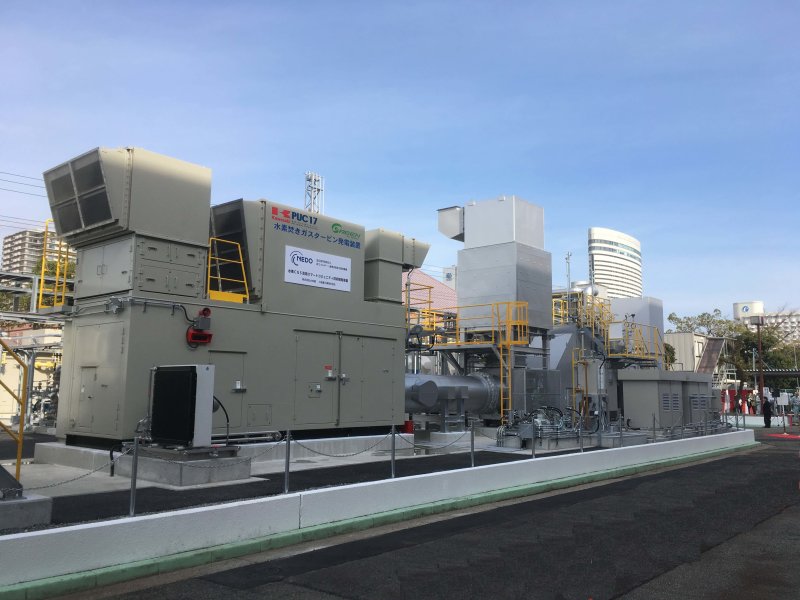
Mitsugu Ashikaga, deputy senior manager of the Solution Department, Promotion Group, Hydrogen Strategy Division, explains, “In the hydrogen combustor with the water injection method, which was developed early stage, water was sprayed into the hot spot of the flame to reduce NOx emissions. However, there was a problem of a slight decrease in power generation efficiency because the evaporation of water absorbed a part of combustion energy. A new combustion technology was needed to solve that problem, so we focused on the burner part where fuel was injected and made to burn.”
*2 Project subsidized by NEDO, “The Smart Community Technology Development Project Utilizing Hydrogen Cogeneration Systems”
100% Hydrogen-Fueled Gas Turbine Operation with Dry Low NOx Combustion Technology with the Adoption of the Newly Developed Burner
In May of 2020, the technical verification of 100% hydrogen-fueled gas turbine operation with dry low NOx combustion technology developed by Kawasaki was successful for the first time worldwide.*3
Ashikaga expounds, “The higher the combustion temperature in a gas turbine, the more NOx that is generated. The water injection method sprays water into the combustor in order to lower the flame temperature, but in fact, this slightly decreases the fuel economy. In response to this issue, we developed a combustor for the dry low NOx method that used no water.”
Natural gas-fueled gas turbines achieved practical application of the dry low NOx method through lean premixed combustion in which the air and natural gas are mixed in advance and then burned. However, when hydrogen is fed into a combustor instead of natural gas into the lean premix combustor, the difference in combustion characteristics causes combustion instability for instance flashback of the flame to the burner. Consequently, the 100% hydrogen-fueled dry low NOx gas combustion technique was devised with the use of the micro-mix combustion technology.
Ashikaga says, “We developed a combustion burner dedicated to hydrogen. The principle is to subdivide the fuel and eject it from tiny nozzles the diameter of the tip of a mechanical pencil so that the fuel burns at each nozzles independently thus this forms many small flames which length is about 2cm. Reduction in NOx is intended because the flame is small and the time during which the oxygen and nitrogen in the air can bind by high temperature is short. It is an absolutely new combustion method that has never been used in conventional gas turbines.”
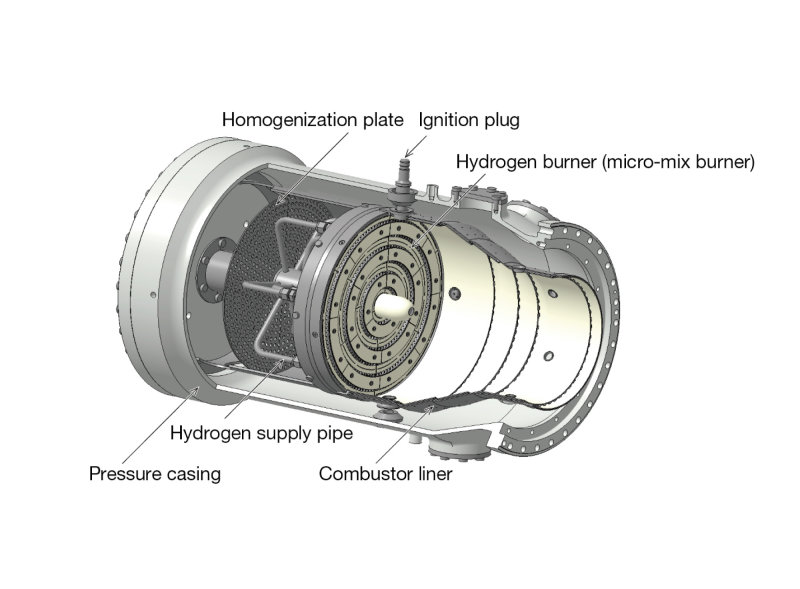
Regarding future plans, studies and development of the dry low NOx combustion technique in the hydrogen-fueled gas turbine will be continued to improve the power generation efficiency and the NOx emission reduction performance, and the applying of mixed fuel with natural gas will also be studied.
Ashikaga explains, “In order to commercialize the dry method hydrogen gas turbines, the technology to use mixed fuel with natural gas is also necessary. We developed gas turbines fueled 100% by hydrogen without using water but it could not apply the use of the mixture with natural gas. Although the ideal situation for power generation in the future is continued operation with hydrogen alone, it will take a little more time until a large volume of cheap hydrogen is available. Kawasaki also moves forward projects to develop the technologies and infrastructures necessary to realize production and transportation of economical hydrogen in large quantities.” For the commercialization of hydrogen energy, Kawasaki continuously endeavors to overcome difficulties.
*3 Project subsidized by NEDO, “Development and Demonstration Project for Low-NOx Hydrogen-fueled Gas Turbine Combustion Technology”
Hydrogen energy is one of the effective solutions to realizing a decarbonized society. To actualize this goal, we must pass many hurdles, including the achievement of an economical, convenient, and steady supply of energy; diverse use of hydrogen; establishment of a hydrogen supply chain; and provision of infrastructure. Kawasaki keeps moving forward step by step to contribute to the new future brought by hydrogen energy and the realization of a sustainable society.
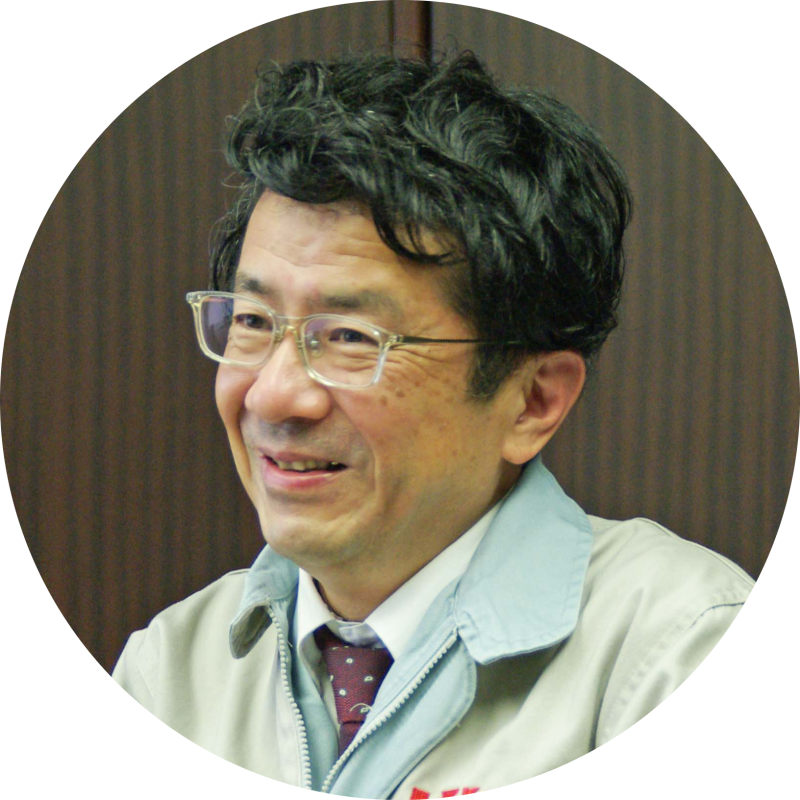
Ship & Offshore Structure Business Division
Energy Solution & Marine Engineering Company
Kawasaki Heavy Industries, Ltd.
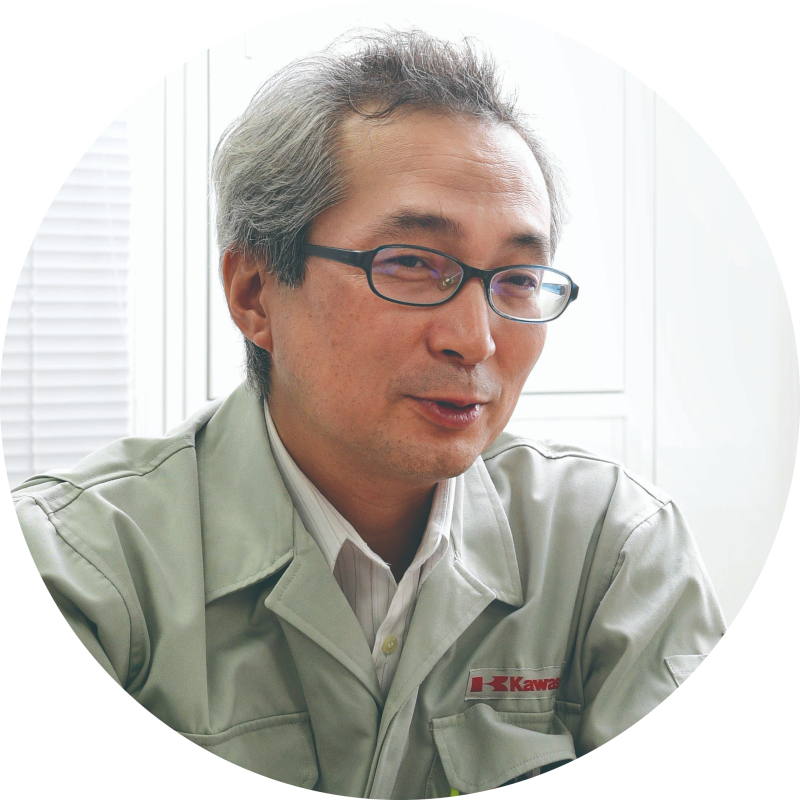
Project Control Department
Hydrogen Project Development Center
Corporate Technology Division
Kawasaki Heavy Industries, Ltd.
![]() Energy and Environment
Energy and Environment

